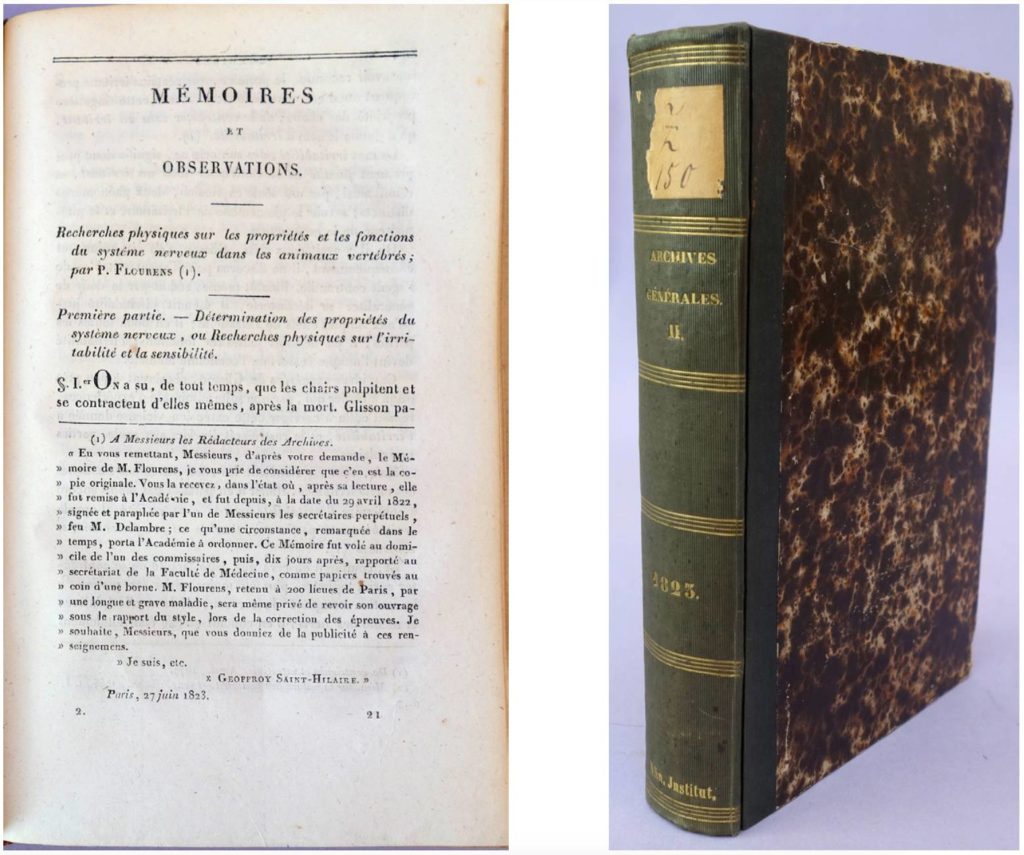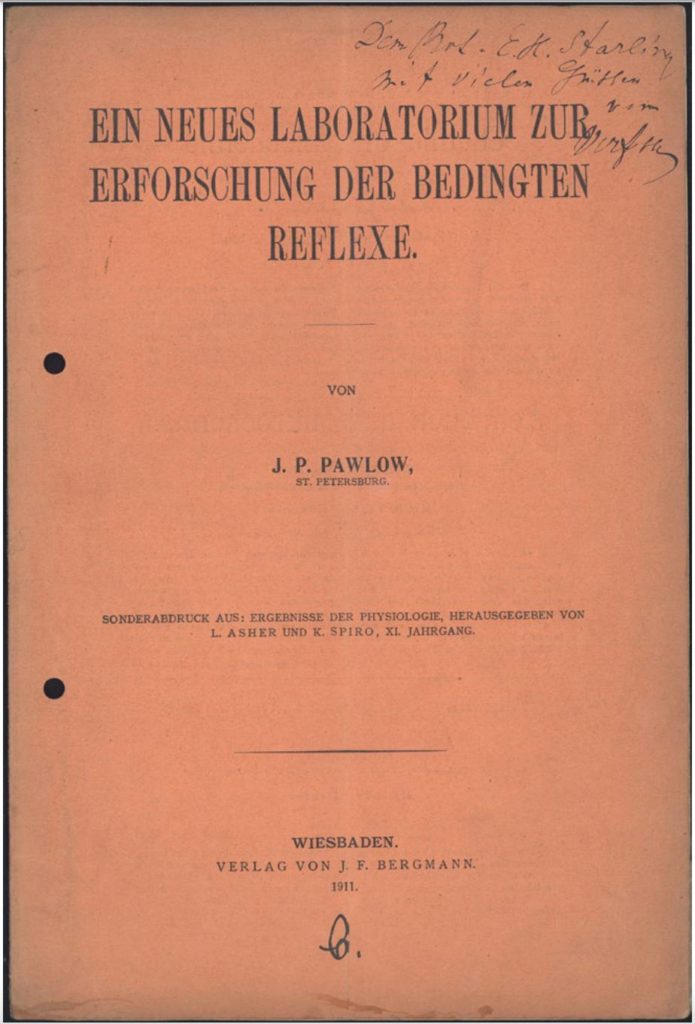Flourens, Pierre (1794—1867)
Recherches physiques sur les propriétés et les fonctions du systême nerveux dans les animaux vertébrés. In Archives générales de médecine 2 (1823): 321-370.
Whole volume. 647pp. 2 plates. 19th century quarter cloth, mottled boards, remains of library shelf-label on spine, minor edgewear. Stamps (some Nazi-era) of the Bibliothek des Med.-Klin. Institut, Munich on title, verso half-title and endpapers.
$2,500
First Edition, journal issue of Flourens’ first paper on cerebral function. In an effort to refute Gall’s theory of cerebral
localization, Flourens carried out a famous series of experiments on pigeons in which he selectively removed either the cerebral lobes or the cerebellum in order to demonstrate their roles in brain physiology. The pigeons deprived of their cerebral lobes retained their sense of equilibrium, but lost all sense of volition and showed no sensory awareness of their surroundings; in contrast, those deprived of their cerebellums lost all ability to coordinate their muscular motions, but retained their ability to initiate movement and process sensory information. Flourens concluded from these experiments that the cerebral lobes were the seat of intelligence and perception while the faculty of muscular coordination resided in the cerebellum; however, he insisted that the entire brain acted as a whole with respect to each of its functions.
Pavlov, Ivan Petrovich (1849—1936)
Ein neues Laboratorium zur Erforschung der bedingten Reflexe. Offprint from Ergebnisse der Physiologie 11 (1911).
8vo. 357-371pp. 250 x 168 mm. Original printed wrappers, creased vertically, holes punched in left margin. Inscribed by Pavlov to physiologist Ernest Henry Starling (1866-1927) as follows: “Dem Prof. E. H. Starling mit vielen Grüssen vom Verfasser.”
$2,500
First Edition Offprint Issue. Pavlov received the 1904 Nobel Prize in physiology / medicine for his studies of the physiology of digestion, which revealed the part that the nervous system plays in controlling digestive secretions. In conducting his physiological researches, Pavlov introduced the method of long-term or continuous experimentation, which—in contrast with traditional vivisectional methods—allowed him to study the operation of physiological processes in healthy animals under normal conditions over extended periods of time. His investigations of the nervous system’s role in digestion led him to explore the phenomenon of “psychic” stimulation; i.e., salivary secretion prompted by the sight or smell of food rather than by direct contact. In Pavlov’s hands this became a powerful tool for investigating the functions of the cerebral cortex and the physiology of behavior.
The most famous outcome of his researches is, of course, the artificial conditioned reflex, in which physiological processes such as salivation are arbitrarily associated with stimuli such as the ringing of a bell. Pavlov presented this offprint, discussing a new laboratory for studying conditioned reflexes, to the British physiologist Ernest Henry Starling, co-discoverer (with Bayliss) of pancreatic secretin (1902; see Garrison-Morton 1024) and co-developer (again with Bayliss) of the theory of hormonal control of internal secretion (1905; see Garrison-Morton 1122). Pavlov had been a strong advocate of the “nervist” doctrine of physiology, which held that the nervous system controlled most body activities; however, Starling and Bayliss’s discovery of secretin, which confirmed the humoral (rather than nervous) transmission of impulses from the intestine to the pancreas, forced Pavlov to rework his theories of digestion.


